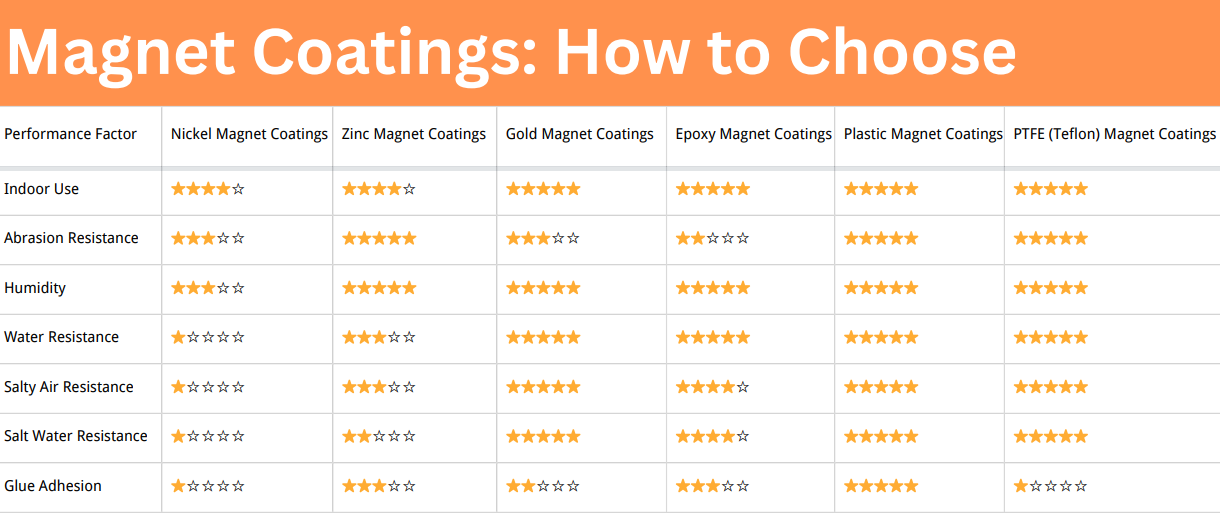7 Points to Consider When You Customize Magnets
Custom magnets are necessary if you need special-shaped magnets for your design. There are several important considerations to keep in mind if you’re looking at getting the best results out of the project. Among a host of applications for these custom magnets, you can attach them to refrigerators, cars, or other metal objects as decoration, or in your homes and offices. With the right material or guide, you can even make one for yourself. So, here are 7 essential points to consider when you customize magnets for any application.
1. Magnet Material
There are several options to pick from. But you have to decide what kind of materials you need to customize your magnets, depending on the value you want out of the product or how you want to use it. Here are some examples:
- Neodymium Iron Boron (NdFeB): Neodymium iron boron can be sintered with bonded NdFeB, which is known for its mechanical strength. Neodymium magnets are also applied in various ways, such as neodymium arc magnets, neodymium ring magnets, and neodymium bar magnets, especially for making motor magnets.
- Samarium Cobalt (SmCo): Samarium cobalt magnets have a relatively higher value, high-temperature resistance, and bright metal color.
- Aluminum-Nickel-Cobalt (AlNiCo): AlNiCo Magnets have a low coercive force, are easily demagnetized if not handled carefully, and are hard and brittle. They are best for high heat applications.
- Ferrite/Ceramic Materials: Ferrite materials are useful in several electronic devices. This is due to their hard, brittle, and polycrystalline nature.
2. Shape
Magnetic materials come in a variety of shapes, and these shapes determine how the magnets are used. Each magnet’s shape determines the strength of its pull, as well as how the magnetic field lines are arranged outside of the magnet. Here are some of the common choices for magnets shapes:
- Block: Block magnets are typically six-sided with straight sides, and all the angles are right angles (90°). These kinds of magnets are mostly used in holding applications where their fit within a channel helps to increase their holding force. When customizing with block magnets, you need to supply the data on the length, width, and height of the magnet.
- Disc (or Rod): Disc magnets are thin flat circular magnets whose thickness does not exceed their diameter. They are the most versatile and commonly used magnet shape. Disc magnets are widely applied in holding applications. As with block-shaped magnets, you also have to provide data on the length and diameter of the magnet.
- Arc: Arc magnets are commonly used in special cases like motors, generators, and alternators, especially rotors and stators. Again, you need to provide the specifications for the outer diameter, inner diameter, length, and angle of the magnet.
- Ring (or tube): Ring magnets have several interesting applications, such as in science experiments to demonstrate magnetic repulsion, and are sometimes used in medicine. Depending on the purpose of customization, you need to supply the correct information for the outer diameter, inner diameter, and length of the magnet.
Related Reading: How Many Shapes of Magnets Are There?
 Permanent Magnets Types
Permanent Magnets Types
3. Grade
Different magnet materials have different grades. Ideally, the grade of a magnet is a good measure of its strength. Generally, higher grade numbers indicate that the magnet is stronger. This means that if you need a strong magnet for your project, you should go for the ones with higher numbers/grades.
Sample grades for some magnets
- Neodymium Magnets: Grades generally range from N30 to N55.
- Samarium Cobalt Magnets: Common grades range from 16 to 32.
- Alnico Magnets: Common grades range from 1 to 9.
- Ferrite/Ceramic Magnets: Common grades range from 8 to 40.

Shapes and Types of Alnico Magnets
4. Magnetized direction
When it comes to the magnetized direction of a magnet, there are two main types. You can either use radially or axially (diametrically) magnetized magnets. Radial magnetization is created in specifically manufactured ring magnets. When the magnetization direction of a magnet is situated along the magnet’s axis, it is said to be axially magnetized. Magnetization direction is very important in manufacturing magnets because a magnet will typically attract the most when one of its poles is touching the magnetic surface you want it to stick to. So an axially magnetized magnet, for instance, is most effective when one of the flat faces is touching the surface.
5. Tolerance
Tolerance is a parameter used in manufacturing mechanical components and is typically measured by a system of standardized tolerances, known as International Tolerance grades. Generally, the tolerance of a magnet is measured with +/-0.05 mm, as in a neodymium magnet. However, accurate tolerance measures mainly depend on the shape, grade, and material of the magnet.
6. Coating
How and where you intend to use the custom magnets often determines the coating you use for the magnets. Many different coatings can be used, such as Ni-Cu-Ni coating, Zn coating, Epoxy coating, gold coating, etc. For neodymium magnets, and Polytetrafluoroethylene (PTFE) and rubber are good choices for coating materials.
7. Quantity
Finally, the quantity of materials you need to make custom magnets is another important factor to consider. To get a quote for making your custom magnets, you need to provide the required quantity. Generally, the higher the quantity of the magnet materials required, the lower the unit price of custom magnets.














